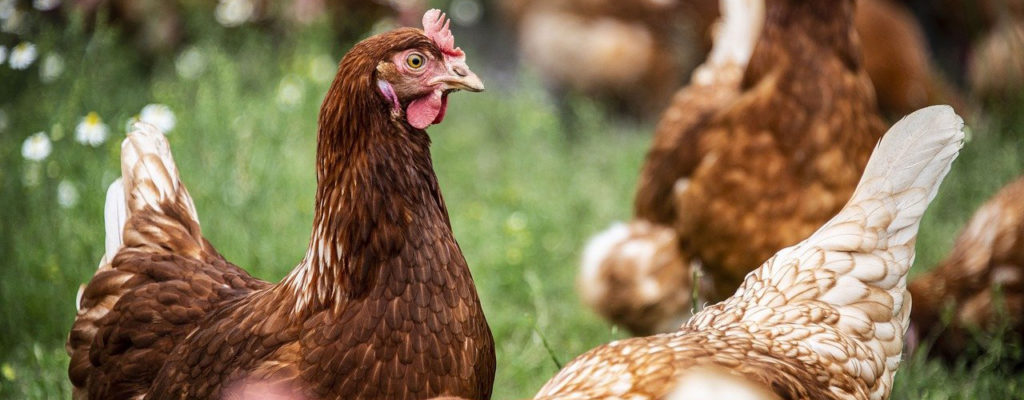The degree of poultry productivity
is proportionally dependent on the quality of its nutrition. For laying hens, this rule works in square terms. Compound feed for laying hens must be extremely nutritious, since the production of eggs is a rather energy-intensive process, but at the same time easily digestible, due to the structure of their esophagus.Степень продуктивности
птицы пропорционально зависима от качества ее питания. Для несушек это правило работает в квадратном эквиваленте. Комбикорм для кур несушек должен быть чрезвычайно питателен, так как производство яиц довольно энергозатратный процесс, но в то же время легко усвояемым, в связи со строением их пищевода.An option comes to mind, put as many nutrients in the chicken feed as possible, so that it is definitely enough. This is fundamentally not true. The rule of “golden middle” should be observed here as well. We’ll cover this topic a little later.
First, there is a digestibility issue. Combined dry feed chickens saturate much more. The difference is that the combined feed can contain up to 20 nutrients at the same time, while the homemade feed contains a maximum of 10. That is, the bird’s body receives a much wider range of nutrients from the feed. And unlike homemade, combined food is the smallest homogeneous structure compressed into granules, which greatly facilitates digestibility. Therefore, with better digestibility, saturation occurs faster, which means that the portion of feed is smaller. It turns out that the combined feed is not only more useful, but also more economical.
However, this type of food also needs to be able to be chosen. Therefore, before buying feed for chickens, we must understand some issues:
- What products does the bird menu include?
- What useful substances and in what ratio should the bird’s body receive? Or where is the “golden middle” here?
Bird diet. Main components.
The diet of poultry, including laying hens, may include the following components:- grain (wheat, corn, barley, oats and others) not less than 60%;
- meal (soy or sunflower), 10-20%;
- legumes (soybeans, beans, peas and others) no more than 30%;
- oil and oilseeds (sunflower, rapeseed, hemp and others), 8-15%;
- grain and food industry waste (wheat bran, meat and bone meal, etc.);
- vegetables (cabbage and cabbage head, potatoes and their peelings, carrots and others);
- plants (nettle, dandelion, clover, etc.);
- amino acids;
- vitamins;
- biologically active substances.

Golden middle
It is clear that for healthy functioning, the bird’s body must receive a certain set of nutrients:
- Exchange (total) energy (hereinafter EE). This is the amount of energy absorbed by the body from food. General energy value. This includes proteins, fats, carbohydrates, etc. It is measured in kilojoules or kilocalories.
- Protein. Chief builder. Its benefits can hardly be overestimated. It is part of all systems and cells of the body. Builds immunity. Able to transform into other types: carbohydrates and fats.
- Carbohydrates. The main part of the diet. Fuel for the body. Due to them, the functioning of all systems occurs.
- Fats. They serve for heating, and also assist in the absorption of certain vitamins.
- Cellulose. is a doctor of digestion. Fills the stomach, helps improve digestion and remove all unnecessary residues from it. Sometimes it contains vitamins.
- Amino acids. A breakdown product of proteins. There are more than 20 species in the body. Participate in the structure and functioning of all systems. They are divided into two types: replaceable (produced by the body on its own) and irreplaceable (not produced independently, must be supplied with food).
- Vitamins. These are the distinctions between chemical elements and their compounds that are beneficial to the body. Some of these can be self-produced, and some must come from food.
However, the mere presence of these components is not a guarantee of success. The concentration of the substance is extremely important. Sometimes its complete absence is better than an overabundance, the “golden middle”.
Concentration norms
- EE. The daily norm of laying hens from 45 weeks of age is 1130-1150 kJ or 270-274 kcal.
- Protein. The daily norm is not less than 15% of the diet. Protein sources: legumes, meat and bone, fishmeal, corn, soy and others.
- Carbohydrates. 60-85%. Cereals are the main source of carbohydrates. Also beans, oilseeds and others.
- Cellulose. 4-6%. Sources: wheat bran, cabbage head and others.
- Amino acids. The bird produces 10 types of interchangeable AK on its own. The rest (essential) must come from food. Of these, three species are not present in sufficient quantities in the products and are added as premixes: methionine, lysine and arginine. In total, their share in the daily diet should not exceed 1%.
- Vitamins. Three main vitamins: calcium (chalk, sea shell, limestone flour, eggshell flour, etc.), sodium (table salt) and phosphorus (bone, meat and bone, fish meal, etc.). Vitamins of the second group are also important, since they are also vital: iodine, cobalt, manganese, iron, copper.

And as a bonus let’s take a look at a couple of feeding tips.
We found out which components and in what ratio should be included in the feed of laying hens. But the question: “How to feed?” remains open.- Scientists and poultry farmers agree that it is best to feed 2 times a day (morning and evening). It is worth dividing the daily menu into parts depending on the season. In the warm season, 60% in the morning and 40% in the evening, or 50 to 50% (depending on the bird’s daily activity). In cold weather, 40% to 50% is better. So that the body definitely has enough energy for the night.
- It is worth following the recommended standards. A hen whose feed exceeds the daily recommended equivalent is at risk of becoming obese. Along with it, a decrease in egg production, up to a complete cessation.
- What should be permanently eliminated from the diet:
– fresh flour products (extremely negatively affect the esophagus, up to the death of the bird);
– spoiled flour products (a spoiled product causes poisoning and a general weakening of the immune system);
– potatoes (raw and green) are toxic, disrupt metabolism;
– refined sugar, salt in large quantities and hot spices (cause fermentation and general disruption of the digestive process). - Compound feed for cockerels. For male poultry, the same feed is used as for laying hens. If you supplement, be careful with animal ingredients. From their overabundance, male birds can become more aggressive.






